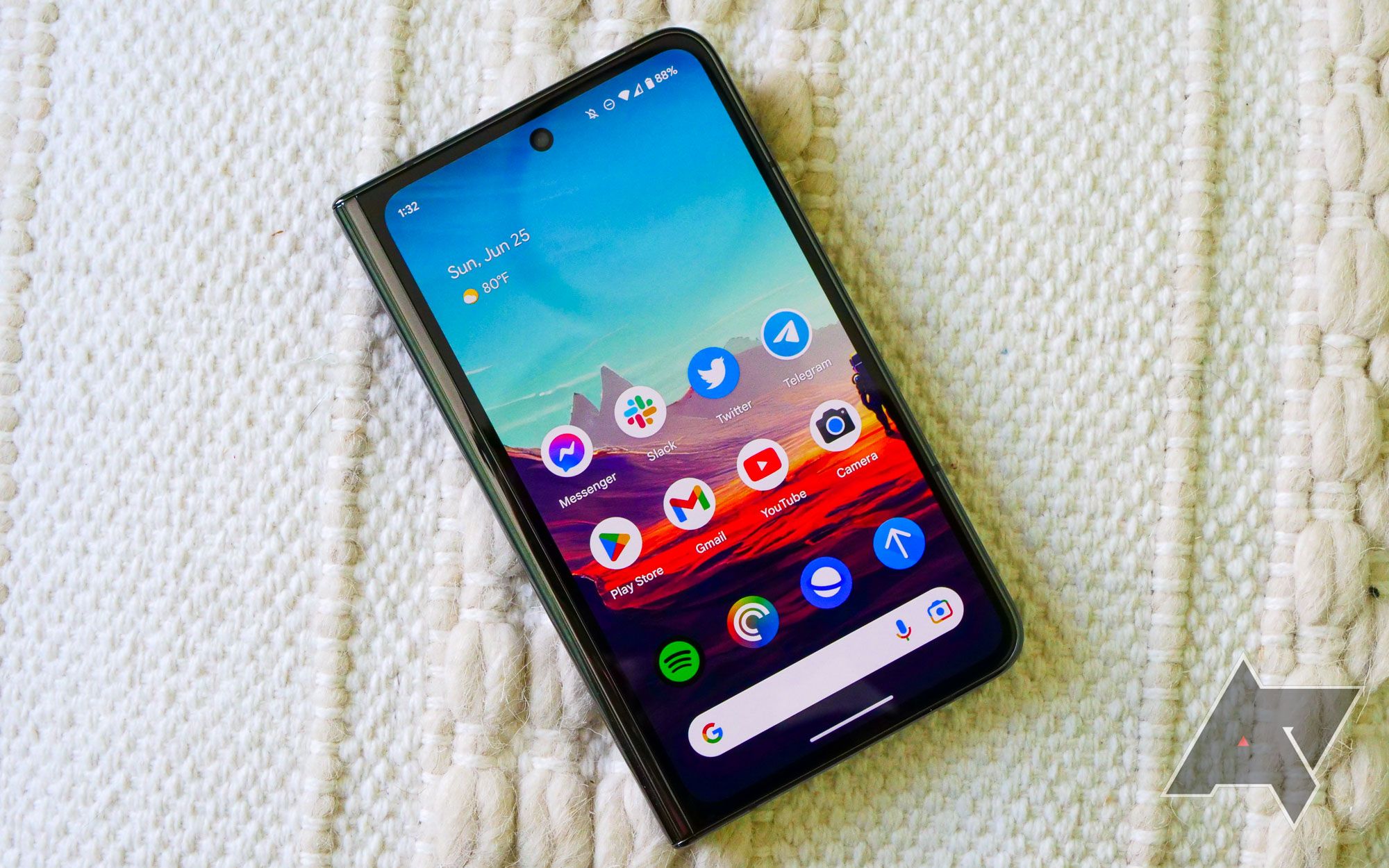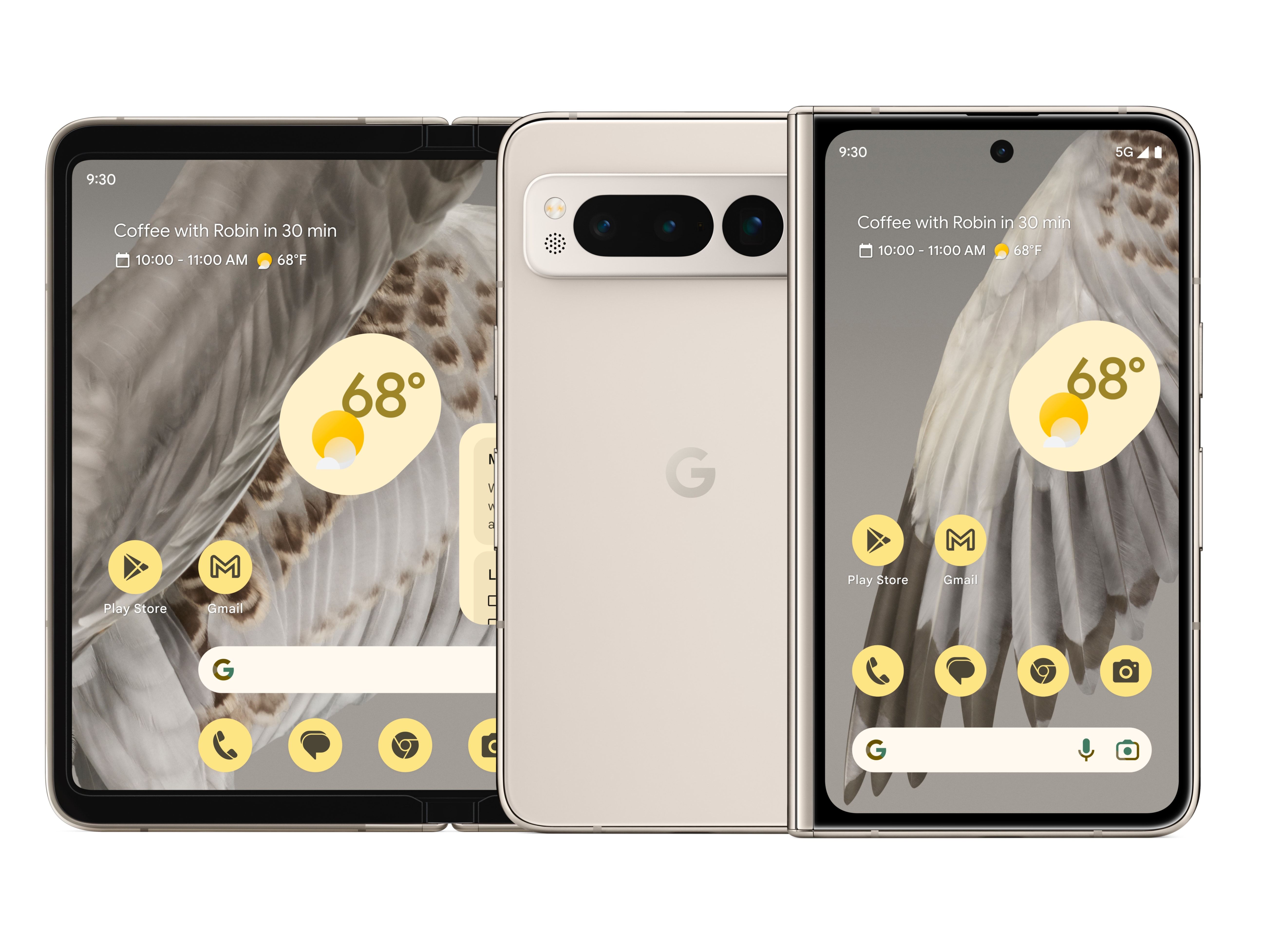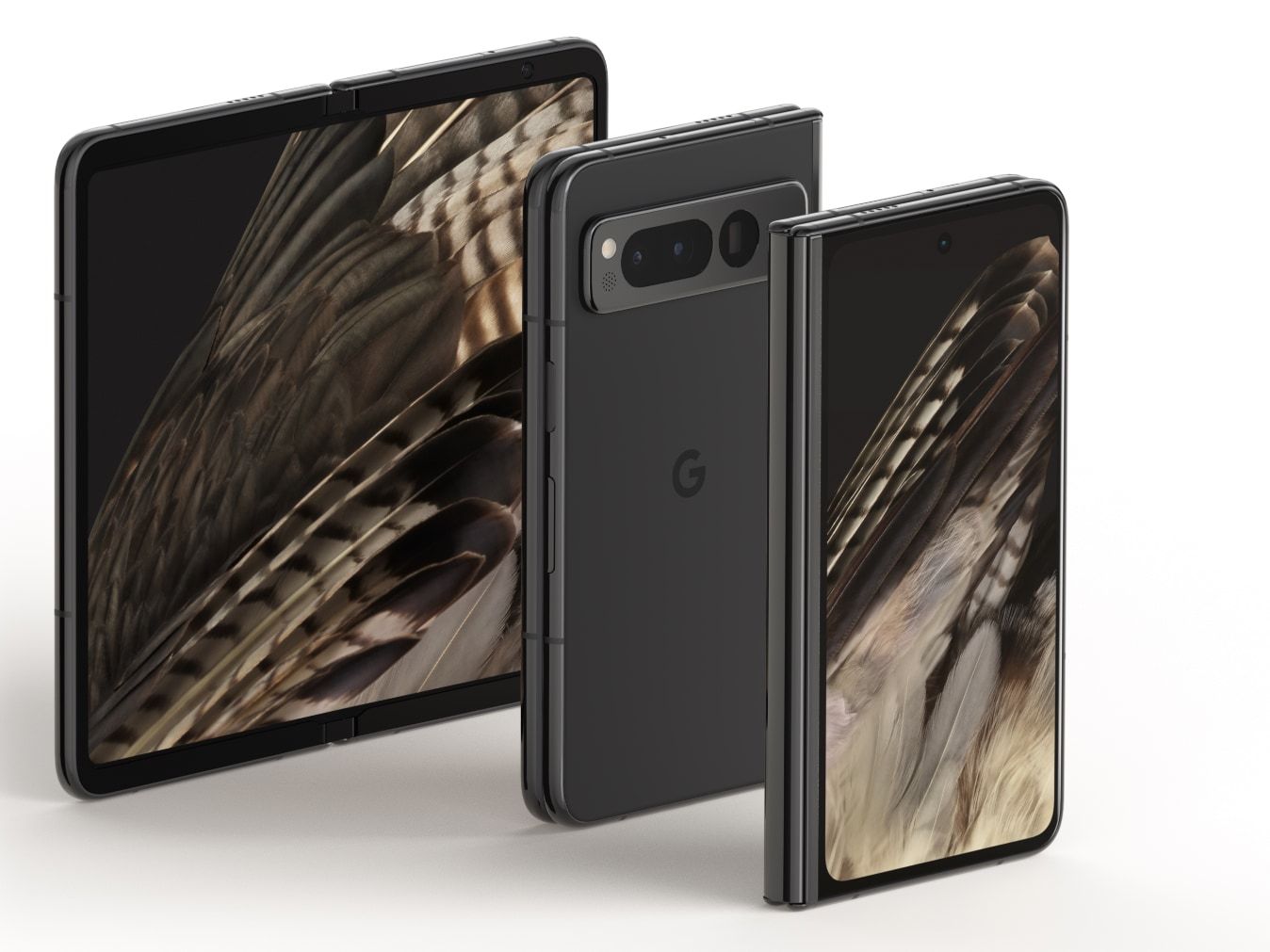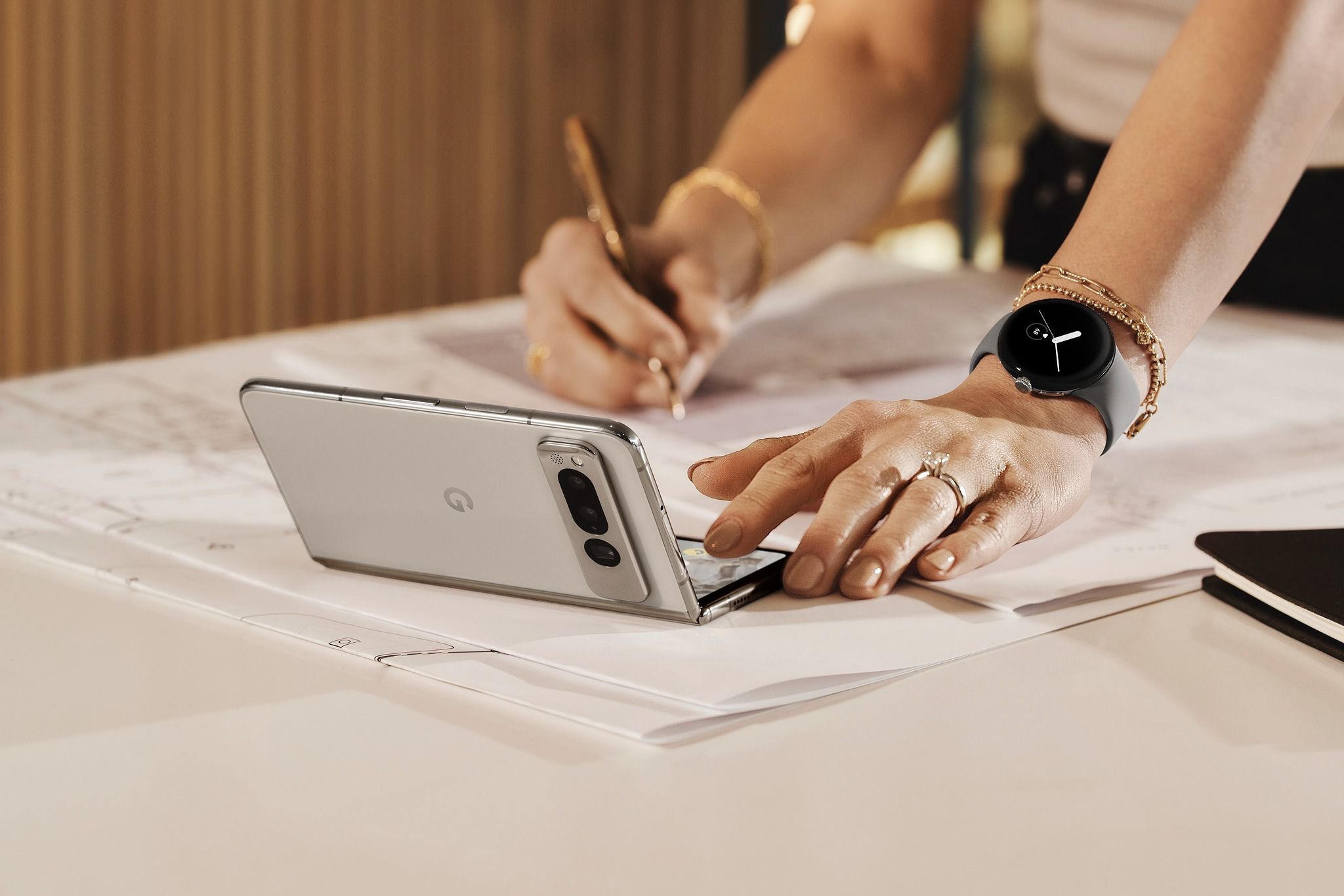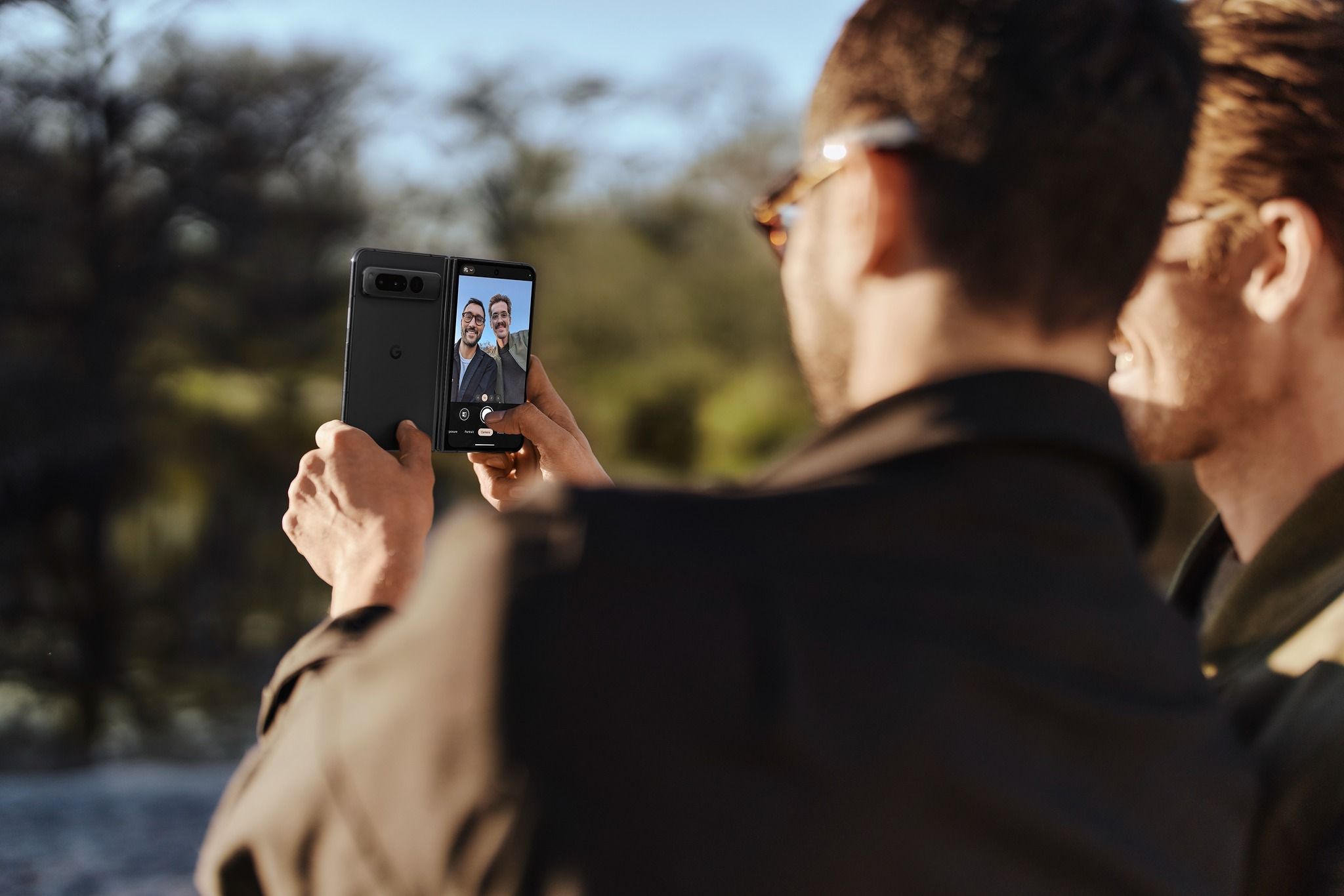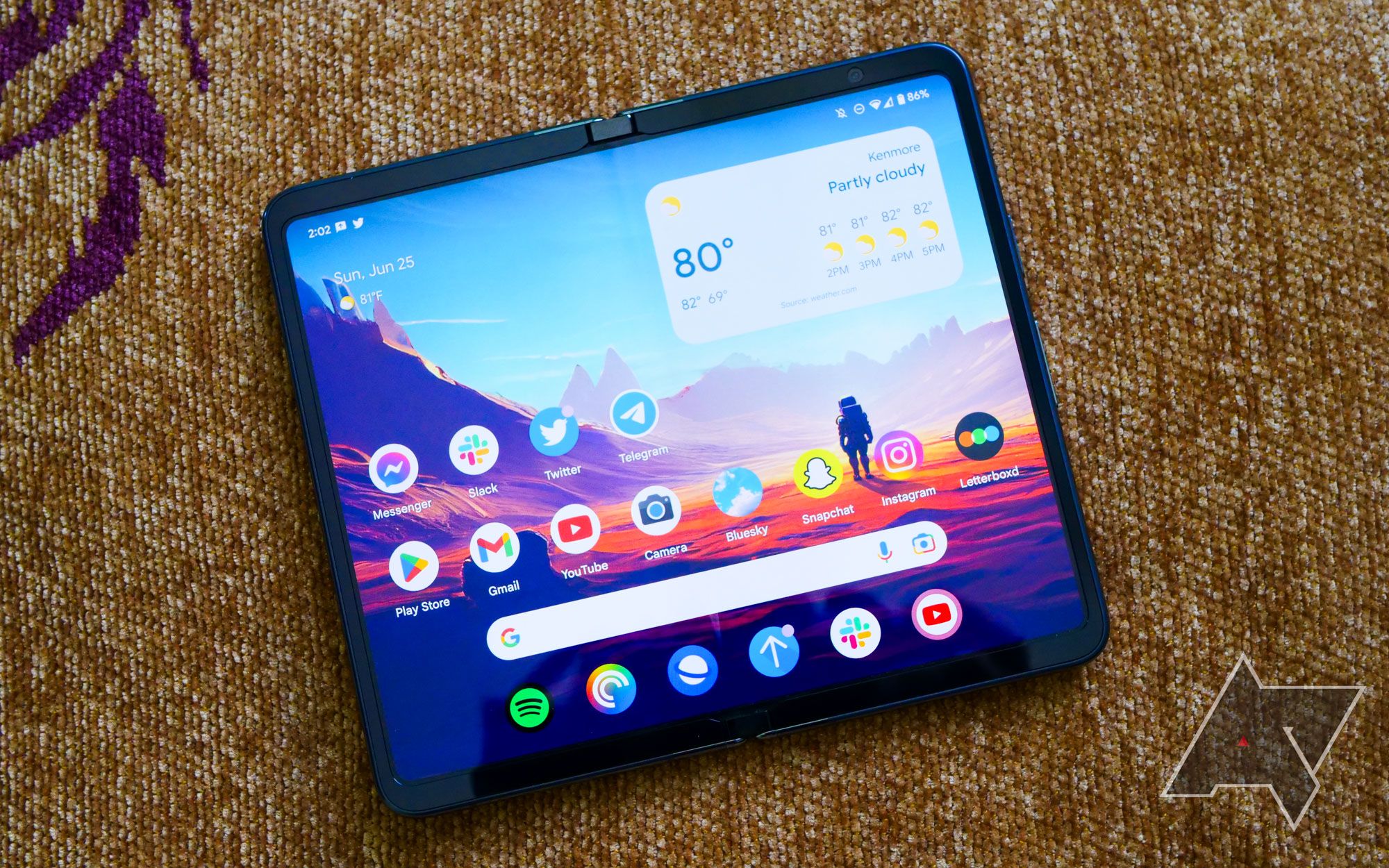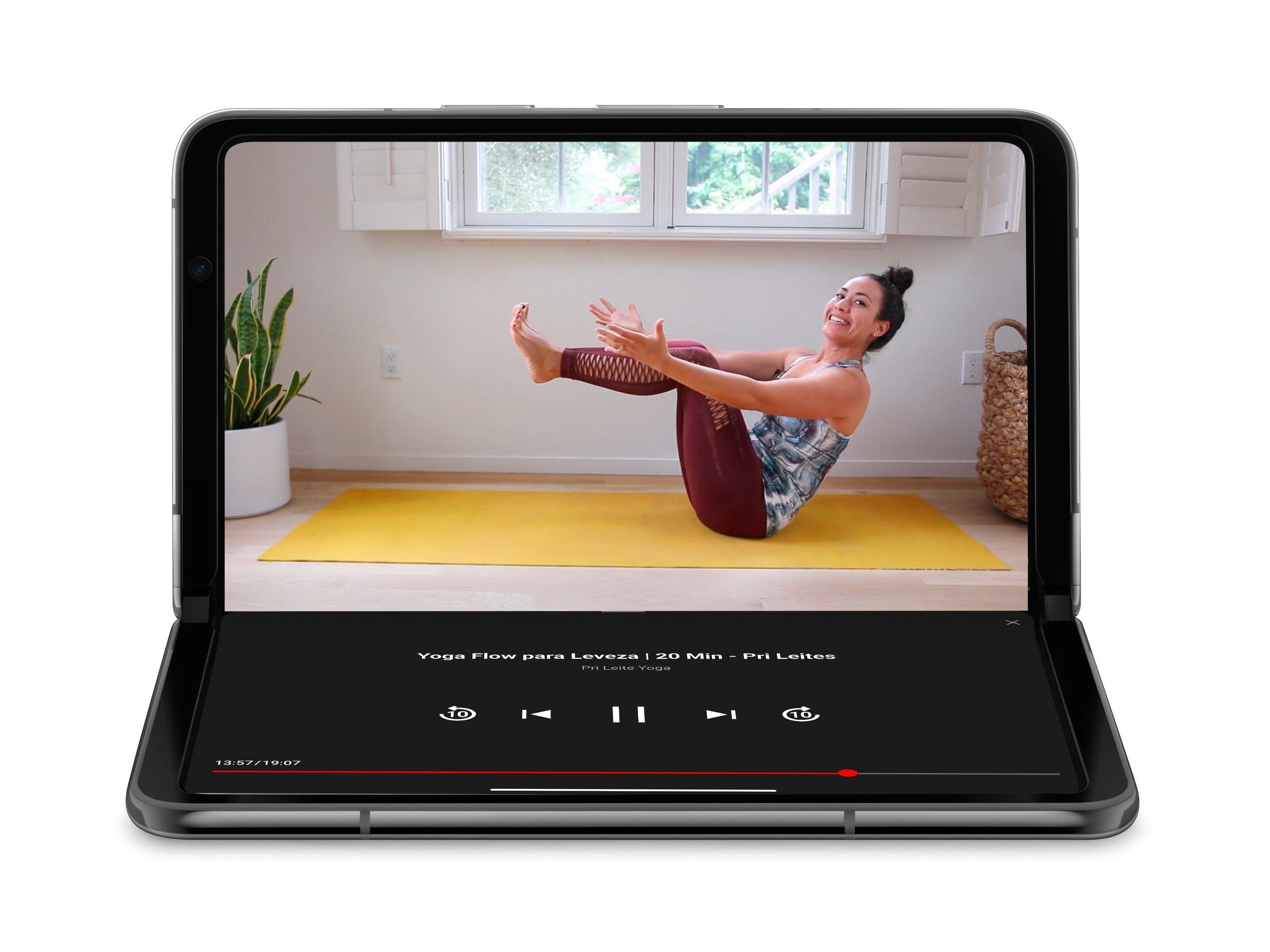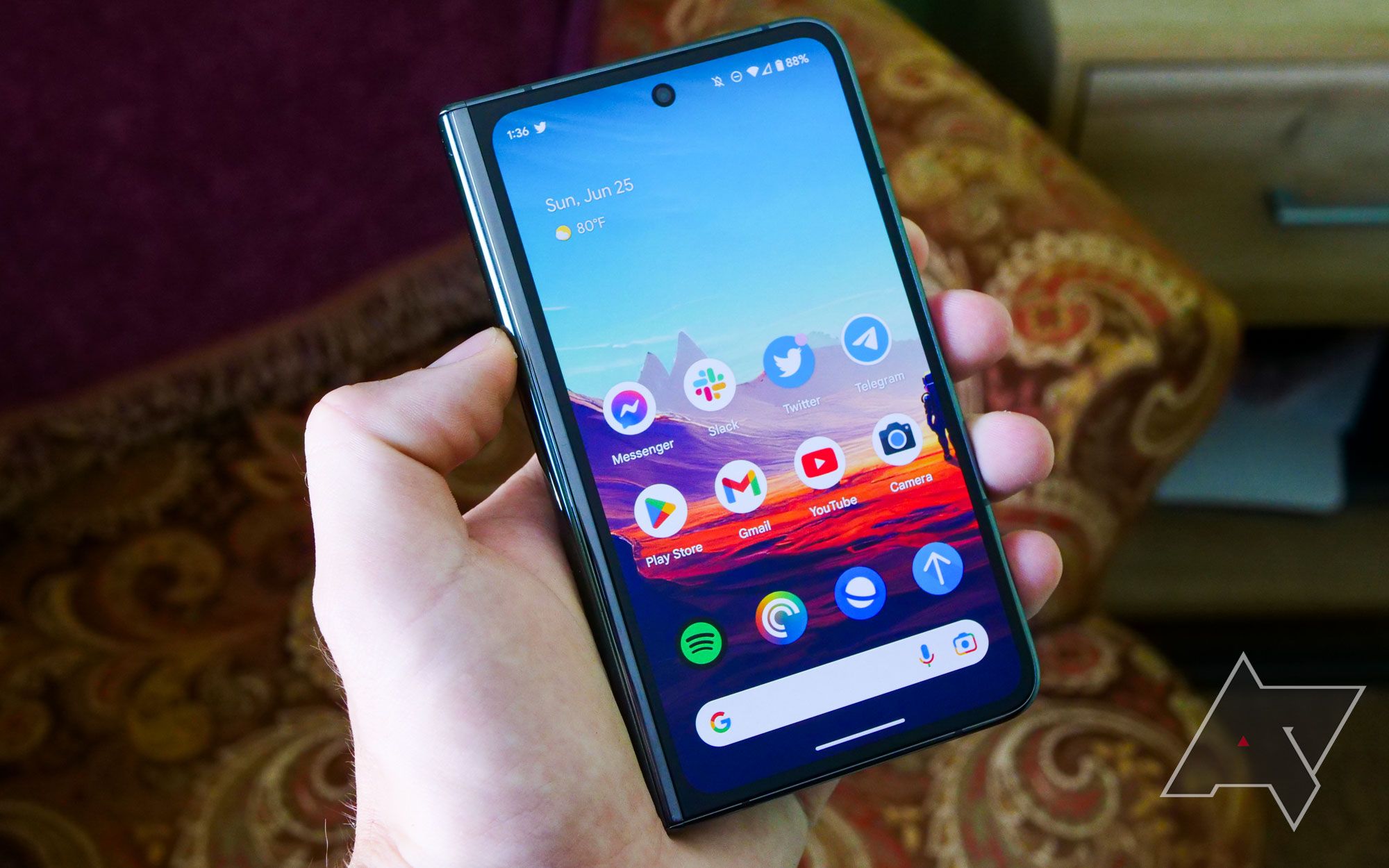Google finally unveiled the Pixel Fold at Google I/O 2023, its first folding phone that goes head-to-head with the Samsung Galaxy Z Fold 5. Like Samsung's flagship foldable, this device is a book-style folding phone that has a regular smartphone-like screen on the front and a tablet-like display on the inside. But unlike that model, it uses a completely different aspect ratio to make the device wide and short.
You can check out our full Pixel Fold review to learn the good, the bad, and the ugly about using this phone, but if you're just curious what the Pixel Fold even is, here's everything you need to know.
Summary
- The Google Pixel Fold is Google's first folding phone that rivals the Samsung Galaxy Z Fold 5, featuring a book-style folding design and a wide aspect ratio.
- The Pixel Fold is available for purchase starting at $1,800 from the Google Store, Amazon, Best Buy, and select carriers in the US, UK, Germany, and Japan.
- The Pixel Fold pairs its unique aspect ratio with a powerful camera system, but it has some drawbacks, including subpar quality with its inner screen, software that needs optimization, and a heavy overall weight that makes holding the device difficult.
Google Pixel Fold: Availability, price, and specs
After an announcement at Google I/O 2023 in May, the Google Pixel Fold started shipping on June 27, 2023. This is right in line with some previous hardware releases at I/O, like the Pixel 6a, which took more than a month after the event to reach store shelves.
If you're convinced the Pixel Fold is for you, you can order it right now from the Google Store, Amazon, Best Buy, or the carrier of your choice starting at $1,800. It was long rumored that Google would try and undercut the Galaxy Z Fold 4 — or its successor, the Z Fold 5 — but as we can see now, this isn't the case. The phone is available in a dark Obsidian and a Google-exclusive light Porcelain colorway. Other than the US, the Pixel Fold has only launched in the UK, Germany, and Japan. A deep apology to our neighbors up north.
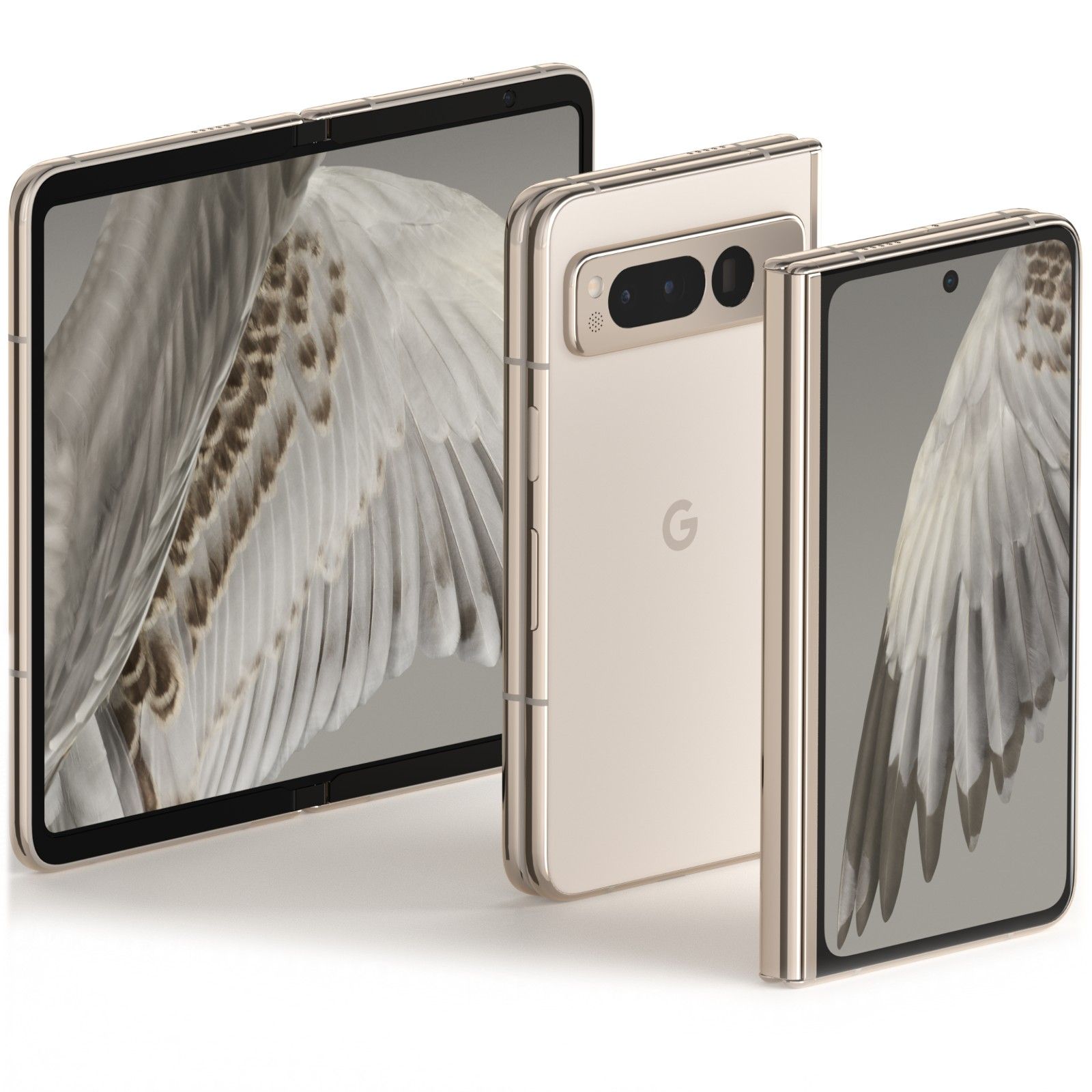
Google Pixel Fold
Google's first foldable isn't the home run some might have hoped for, but if you're looking for an alternative to Samsung's Z-series domination, this is it. With an excellent notebook-like design and a killer camera system, there's a lot to love here. But the middling inner screen quality, hefty weight, and unoptimized software might turn off some potential buyers.
- SoC
- Google Tensor G2
- Display
- RAM
- 12GB
- Storage
- 256GB, 512GB
- Battery
- 4,821mAh
- Ports
- USB-C
- Operating System
- Android 14
- Front camera
- 8MP f/2.0 (84° FOV) inner selfie camera, 9.5MP f/2.2 (84° FOV) outer selfie camera
- Connectivity
- NFC, UWB
- Dimensions
- Folded: 139.7 x 79.5 x 12.1mm, Open: 139.7 x 158.7 x 5.8mm
- Colors
- Obsidian, Porcelain
- Weight
- 283g
- IP Rating
- IPX8
Google Pixel Fold: Design and screens
The Google Pixel Fold looks like you would expect a book-style folding phone to look like. It has an unassuming display on the exterior with an aspect ratio of roughly 17.5:9. This means it's a little shorter and boxier than many regular smartphone screens out there that typically come with a 20:9 ratio, but it's arguably a more usable form factor than the Fold 4's all-too-narrow 23:9 screen, which makes buttons cramped and squishes a lot of apps that weren't designed for a screen this tall.
On the back, the familiar Pixel camera bar greets you, which Google first introduced with the Pixel 6 series and then further refined with the Pixel 7. In contrast to the regular Pixel phones, the Pixel Fold's bar doesn't fully extend to the rim of the back, which is likely a structural engineering decision, as it could lead to issues with the hinge. It still retains the familiar Pixel design that Google established. The back is otherwise understated, with nothing but the familiar G logo in the middle.
When you unfold the Pixel Fold, a tablet-like 7.6-inch screen is revealed. In its default orientation, it provides a landscape layout, unlike most other foldables out there that offer an inner display that's taller than wider. The big bezels at the top and bottom of the screen are another notable difference compared to its rivals. They might make the Fold look a little more dated, but they also help you hold on to it with one hand without accidentally touching the screen, while giving the hinge extra space. The top bezel also houses the interior front facing camera, which doesn't get in the way of the interface at all. Samsung solved this problem with a (poor quality) under-display camera.
The displays themselves are competitive. Both screens offer an FHD+ resolution with a refresh rate of 120Hz, though the exterior screen gets a tad brighter with up to 1,200 nits in HDR and a peak brightness of 1,550 nits. The inner screen only goes up to 1,000 nits and 1,450 nits, respectively. That makes the outer screen the display to use when you're outside in the sun — something we can confirm from regular use. Compared to the Galaxy Z Fold 5, the inner screen is woefully dim.
The hinge is made of a multi-alloy steel construction and is supposed to offer fluid friction across the full 180° range of motion. This makes it possible to use the Pixel Fold in different "Tabletop mode" positions (or Flex Mode, as Samsung calls it), meaning you can use it half-folded, which can be convenient for watching videos or typing longer texts.
No matter if you use the phone folded or not, the power and volume buttons are always on the right side in the default orientation. The power button also doubles as a fingerprint scanner, a first for the Pixel lineup.
Google was quick to claim that the Pixel Fold is the thinnest and most durable foldable on the market, though the company added caveats to this stat at launch. It was actually the thinnest and most durable in the four markets where it's sold, though since the launch of the OnePlus Open, this is no longer true.
If the Pixel Fold feels particularly refined for a first-gen Google product, it's because technically it's the second iteration — you just didn't see the first. The company confirmed as much in a blog post exploring the design of the Pixel Fold, admitting to holding back on releasing an earlier model that just didn't measure up to internal expectations.
Google Pixel Fold: Hardware and camera
At $1,800, you would expect crème de la crème hardware, and the Pixel Fold delivers. It comes with the same Google Tensor G2 chip that you can find across the complete Pixel 7 lineup, coupled with 12GB of RAM and up to 512GB of storage, with 256GB representing the entry-level variant. The package is powered by a 4821mAh battery that can be charged wired and wirelessly, though at 21W wired, it's not particularly speedy to power up before a night out.
Other than this, you can find a Wi-Fi 6E radio and a sub6 and mmWave 5G antenna inside. Bluetooth 5.2 and ultra-wideband support are also on board. The device is certified for IPX8 water resistance.
The camera hardware is also no slouch and right up there with flagship phones. The setup is lead by the 48MP quad PD main camera, complete with OIS and an aperture of f/1.7. It's joined by a 10.8MP ultrawide with a 121° field of view and a 10.8MP dual PD telephoto capable of a 5x optical zoom. With its computational magic, the Pixel Fold can reach up to 20x when zoomed digitally. The rear camera can record videos at 30 or 60FPS in up to 4K and optionally offers 10-bit HDR video.
The usual Pixel features like astrophotography, cinematic pan, slo-mo at up to 240FPS, optical and electronic image stabilization, Real Tone, Night Sight, and Portrait photography are also on board. The folding form factor also makes it easy to take a selfie with the main cameras using the front screen.
The selfie cameras are simpler, but they both support face unlock to help you get past your lock screen faster. The exterior 9.5MP camera uses dual PD, has a fixed focus, and an aperture of f/2.2. The interior shooter is 8MP and has an aperture of f/2.0.
Google Pixel Fold: Software
The Pixel Fold is a Google phone through and through, and that's particularly obvious when it comes to software. The Fold launched with Android 13, and received an upgrade to Android 14 following its October 2023 launch. Unfortunately, despite arriving only a few months before the Pixel 8 Pro, Google's $1,800 foldable is only eligible for three OS upgrades — the first of which it's already received — and five years of security patches. You won't get the same promise of seven years of upgrade support.
Being a foldable, the Pixel Fold also offers a few extra features. Apps can take advantage of its half-opened Tabletop mode, allowing you to, for example, watch a video on the top half and have playback controls on the bottom half.
The Pixel Fold also offers a taskbar in its unfolded position, which makes it easier to multitask and open more than one app at a time. You can use it to pin apps to the left or right side of the screen. When not in use, the taskbar disappears in order to give you more screen real estate, only to be revealed when you swipe up a little from the bottom.
The Pixel Fold is finally here
The Google Pixel Fold was in the rumor mill for more than a year, without Google ever acknowledging its existence until a few days before Google I/O 2023. With the launch cycle finally out of the way, anyone can run out and grab their own Pixel Fold — so long as they live in one of four regions, of course. We can only hope that this brings more foldables from other manufactures to the US, as more competition is always better.

Google Pixel Fold
Google's first foldable has arrived with a wider aspect ratio — inside and out — as well as the Tensor G2's AI finesse to help squeeze every pixel out of the cameras and every iota of productivity out of your day.

